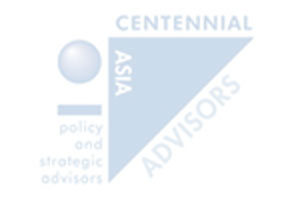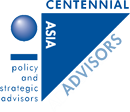- October 7, 2019
- Posted by: admin
- Category: Centennial Asia Insights
No Comments

Highlights from the CAA Weekly Table
What has changed?
- A glimmer of hope for regional trade agreements: There is somewhat more hope now that the ambitious RCEP agreement could be sealed, after India, the sole holdout, softened its position. Negotiations should conclude in November.
- Disconcerting political trends: President Jokowi’s moral authority has been diminished by protests and his weak response to them, thus endangering his reform agenda. In Malaysia, the ruling coalition is at risk as Premier Mahathir’s manoeuvres over succession deepen suspicions that he is not serious about ceding power as promised. In protest-hit Hong Kong, increasing violence, signals of Chinese impatience and deepening divisions suggest an inflexion point is near.
- Growing fears of slowdown in Asia, policy is responding slowly: The Modi government outlined more stimulus efforts to drum up animal spirits in India’s sluggish economy but a sustained recovery is not assured. There is little light at the end of the tunnel for the Philippines as far as tax reforms are concerned while policy rates are unlikely to budge in 4Q19. Broad-based weakness is evident in Thailand with buoyant tourism a sole bright spot.
Global economy: Emerging patterns disfavour Asia
- The global slowdown, mostly concentrated in manufacturing, is now spreading to the so-far resilient services sectors in the G3. This together with the deepening rout in the global tech cycle, point to moribund export prospects for Asia.
- Mounting resistance to monetary accommodation in the US and EU means that Asian central banks will have to tread cautiously in pursuing rate cuts to support their flagging economies.
- Despite the more uncertain backdrop, Asian economies still remain on good footing for now.
China: Outlook finely poised as political leaders grapple with challenges
- China took a step back to re-think strategy following the breakdown of talks on trade with the US in May. The political leadership has used the time wisely, successfully consolidating its political position whilst formulating a new strategy for the long-term which it is confident will place China in an even stronger position eventually.
- Nevertheless, our view is that the near-term risks to growth remain high. Should these risks materialise, the policymakers’ reaction function of doing just enough to prevent a collapse in aggregate demand will be inadequate.
- Barring a major shock to the economy, the economy will manage a controlled descent in the near-term as policy effectiveness has improved and the “buffers” which prevent risks from crystallising remain considerable.
- We are sanguine on the long-term strategy that the authorities are in the midst of devising. That said, if it is to effectively place China on a robust footing for the long-haul, policymakers need to formulate a more convincing response to China’s long-suffering deficiency that is its sub-par productivity performance.
The CAA Weekly is currently available only for our subscribers. Please email contact@centennialasia.com for subscription enquiries
7-Oct-2019
